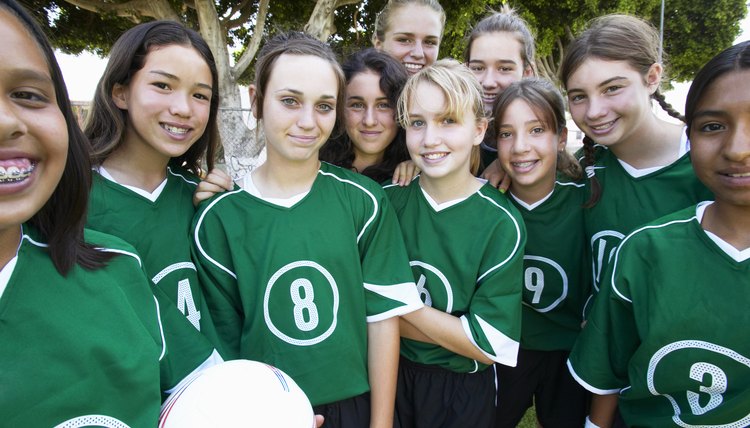What does fact checked mean?
At SportsRec, we strive to deliver objective content that is accurate and up-to-date. Our team periodically reviews articles in order to ensure content quality. The sources cited below consist of evidence from peer-reviewed journals, prominent medical organizations, academic associations, and government data.
- International Journal of Behavioral Nutrition and Physical Activity: Extracurricular School-based Sports As A Motivating Vehicle for Sports Participation in Youth: A Cross-Sectional Study
- Center for Disease Control and Prevention: Child Obesity Facts
The information contained on this site is for informational purposes only, and should not be used as a substitute for the advice of a professional health care provider. Please check with the appropriate physician regarding health questions and concerns. Although we strive to deliver accurate and up-to-date information, no guarantee to that effect is made.
Pros and Cons of Middle School Sports

Middle school sports can provide numerous benefits to participants. They promote fitness to those who might not otherwise consider participation in a sport, and help teach new skills that translate into the classroom as well. But if school sports programs aren’t run with the needs of the middle school age group in mind, negatives may be associated with them as well.
Healthier Students
A prime benefit of middle school sports is that they promote exercise and physical activity. The Center for Disease Control and Prevention reports that the percentage of children aged 12 to 19 considered obese increased from 5 percent in 1980 to 21 percent in 2012. With the main focus of the school day centered around academics and limited physical education course time in most schools, middle school sports provide an outlet that encourages students to make fitness a priority.
Increased Opportunity
Middle school sports provide opportunities for those who can’t participate in outside activities because of logistical or financial reasons. If the teams are inclusive -- meaning anyone who tries out and is willing to come to practices is on the team -- middle school sports may be the only practical chance a student has to learn how to play a new sport. Middle school sports such as track and field or cross-country, which can have large squads, provide an excellent opportunity for students to get in shape.
New Skills
Sports allow participants to develop skills that go beyond the physical activity that the individual sport requires. An emphasis on teamwork and working in groups can complement similar activities that occur in the classroom. Students may form connections through sports teams that wouldn't otherwise occur. Sportsmanship lessons likewise can translate into the classroom experience by emphasizing the importance of appropriate behavior.
Too Restrictive
When middle school sports serve only as pre-teams for making high school and college squads, it can introduce high-pressure competition to students who may not be ready for it. Too much of an emphasis on winning, as opposed to building skills, may defeat the positives that middle school sports can bring. In addition, this emphasis may lead to the introduction of developmental activities not appropriate for children in this age group.
Cost and Focus
Middle school sports often become a casualty of budget cuts as schools choose to focus on academic resources rather than extracurricular activities. Should that happen and the parents elect to make up shortfalls via alternative means, such as requiring families to contribute more money in order to buy equipment, that can lead to a situation where low-income students are shut out from participation because of the costs. Alternatively, sports can take on enough importance for some students that they neglect their schoolwork, which can have negative consequences for their academic future.
References
- International Journal of Behavioral Nutrition and Physical Activity: Extracurricular School-based Sports As A Motivating Vehicle for Sports Participation in Youth: A Cross-Sectional Study
- National Association of Elementary School Principals: Trends and Issues in Middle-Level Sports
- Education Week: N.Y. Times Hosts Roundtable on Pros and Cons of Youth Sports
- Center for Disease Control and Prevention: Child Obesity Facts
